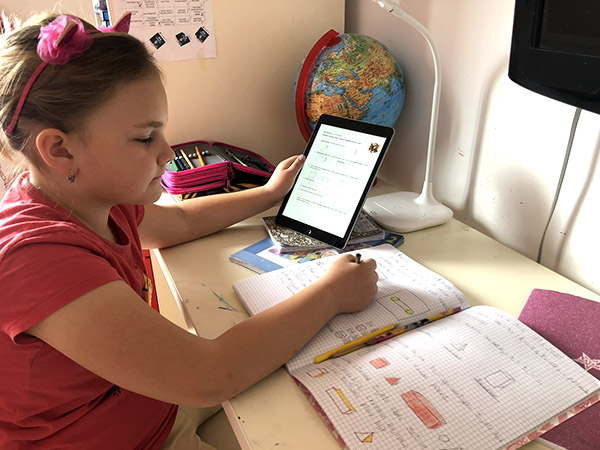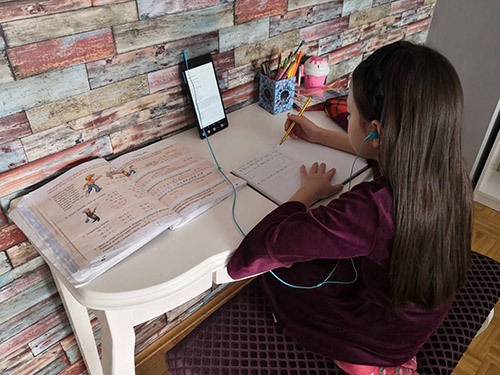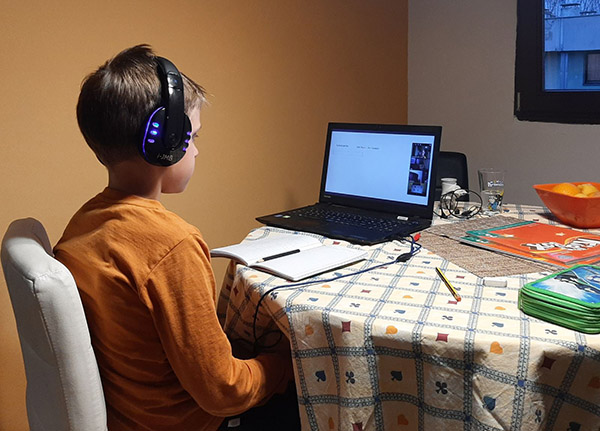 North West Balkans
North West Balkans
Languages
Online teaching for all: How to make our online classrooms more inclusive?

For most people in our country, life has quickly turned upside down from one day to the next with the coronavirus (COVID-19) outbreak. In an effort to slow down the spread of the global virus, schools and universities in more than 120 countries around the world have closed their doors, forcing their students to stay home.
These changes affected nearly three quarters of the world's student population, an estimated 1.2 billion learners. That number is expected to increase as the Coronavirus continues to spread.
Governments and communities must act now to ensure that millions of vulnerable children do not lose out on quality education. Overnight, parents were handed the teachers' baton, tasked with teaching their kids remotely. For many of them, home schooling is uncharted territory, which is causing its own set of fears. Teachers, on the other hand, are faced with a new and unexpected challenge of teaching their learners remotely, using modern technologies. Online learning is a powerful tool for educational institutions as long as it is accessible to everyone.
It is important that, even in the times of crisis, we do not forget to make teaching an inclusive process as much as possible and adapt it to the needs of all students. Services, programs and activities online must be accessible to all, unless an equally effective alternative is provided. To support our teachers in this endeavour, we asked inclusive education experts from Centres for Development of Inclusive Practices in Tuzla Canton for advice.

Below are their recommendations for adapting teaching materials when preparing online classes.
• Make sure your video camera and microphone are working properly on your computer. First, make sure that audio / video settings are correct and test them with your students. Prepare students for what you will cover through teaching, what technology you plan to use, and what they should do if there is a problem. Encourage them to find a quiet space where background noise will not distract them. Be aware that not all students will have this opportunity. Check with your students individually what their home distractors are and try to find a way to alleviate them together.
• Prepare a solid lesson plan outline with activities and backups. Everything you intend to present to students should also be available on another platform, where students can access the material independently. Have a backup plan in case the technology fails. Share material and worksheet with everyone via email or other web applications.
• Be careful how you use the chat window. It can be used for comments / questions during the class, but also be aware that you will not be able to see this window while doing PowerPoint presentation or sharing your screen.
• When designing teaching materials, it is very important to keep in mind the appropriate font (appearance) of the letters. Using different fonts in a document can make the document easier or harder to read. Use an easy-to-read font, font without additions. Avoid using different fonts in the same document, as this can make it difficult to read the contents of the document. Avoid using different additional features in the same text (bold, italic, underlined words or letters). Make sure there is enough space between the words in the sentence.
• It is also very important to take into account the appropriate use of colour, contrast. To ensure greater readability of the content of the document, keep in mind the contrast between the colour of the letters and the background of the text during preparation of teaching materials. Always ensure adequate contrast between the text and the background colour of the document. Avoid using a colourful design background that may affect the readability of the text. It is best, however, to use the standard settings; black text on white background.

• When preparing the content, make sure that the information is concrete, clear and easy to read. If you have a student with reading difficulties, use short and clear sentences. If necessary, provide less information in the document. Provide enough space for text. Structure the document well. The title and content of the text should be clearly separated and visible. Whenever you can, use illustrations / photos (this makes text comprehension easier). When using illustrations / photos, ensure that they represent one idea, activity or thought. The photo you use should be simple and straightforward, with no extra content and have good colour contrast. Try whenever appropriate to add description of what is presented in the illustration / photo, that way the content is available to visually impaired persons as well. Avoid using the text on the illustration / photo itself. Illustration / photo must have a clear place in the document and follow its content. Now that you are able to use a lot of different audio / video materials that can help children to learn, seize this opportunity by customizing your teaching for all your learners.
• We need to keep in mind that for students who have certain learning disabilities, and in the 3D and online classroom, the approach will have to be individualized, in line with their needs and abilities. You know your students best and, accordingly, set aside time when planning classes for individual additional explanations, technical problems solutions, instructions for using the programs, etc.
• Follow the website (https://crip-tk.ba/) and Facebook pages (CRIP Gradacac and CRIP Banovići) for more recommendations on methods of individualization for students with disabilities.
In the end, their general message is: If a child cannot learn the way we teach them, we should teach them the way they can learn. Good luck with your work!
Prepared by: Dalila Bašić/Save the Children, in cooperation with Centres for Development of Inclusive Practices Gradačac and Banovići.